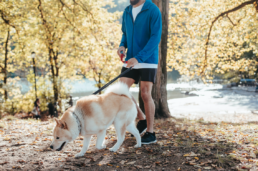By Sandra Huskey, First Mile Care, DPP Coach
As a certified group fitness instructor as well as a National Diabetes Prevention Program (DPP) coach, I help DPP participants create physical activity habits to reduce the risk of developing type 2 diabetes. A few months ago, I led a session on how to do resistance training at home with household objects as part of the First Mile Care DPP webinar series on “Diabetes Prevention in Action.” Recently, in a follow-on session, I demonstrated how to use resistance bands and light hand weights.
Resistance training is when you use force against your own movement. You can create resistance through your own body weight or by using free weights like dumbbells and barbells, machine weights, and resistance bands. Resistance bands come in multiple forms and degrees of resistance, depending on your level of strength. You can buy them in sets that are colored-coded to go from light to medium heavy to extra heavy. Some come with hooks for a door handle so you can change your resistance depending on the exercise you’re doing. And others even come with a doorstop so that you can leverage a sturdy door as part of your exercise routine.
Flexible and portable
Resistance bands are flexible enough that anything you do with a dumbbell or weight, you can also do with a band. The other great thing about resistance bands is that they’re not only inexpensive, but portable. You can take them anywhere — to the park or the gym, or on your next road trip. You may not take dumbbells on the road, but you can throw resistance bands into your car or suitcase. Whether you’re staying in a hotel room or a friend’s house, you’ll have a fitness aid so it’s easy to stay physically active while away from home.
Resistance training helps build muscle as well as strength and flexibility. And since muscle burns more calories than fat, it helps you with your DPP goals. Keep in mind that you can do strength workouts every day, but you should vary the part of the body you’re exercising. If you focus on your upper body one day, you may want to switch to legs the next day.
The video below shows my short demonstration on using resistance bands from our recent webinar. I show a variety of easy exercises that you can do while seated, standing, squatting, and using a door. You can also find a lot of useful workout videos on YouTube for even more ideas.
To learn more about how you can benefit from the First Mile Care Diabetes Prevention Program, take our prediabetes risk test and get started today!




